Types of Garrett Honeywell Turbochargers
Garrett Honeywell offers various turbocharger designs to meet different performance needs and engine specifications. Each type has unique characteristics that make it suitable for specific applications.
Expert Tip: Understanding the differences between turbocharger types is crucial for selecting the right one for your vehicle's performance goals and driving style.
Single Turbo
Single turbochargers are the most common configuration, featuring one turbocharger unit installed on the engine. They offer:
- Improved power output and fuel efficiency
- Simpler installation and maintenance procedures
- Cost-effective performance enhancement
- Ideal for daily drivers and entry-level performance applications
Best for: Everyday vehicles seeking balanced performance and efficiency
Twin-Turbo
Twin-turbo systems employ two turbochargers, typically with one connected to each cylinder bank in V6 and V8 engines, providing:
- Quicker spool time with reduced turbo lag
- More balanced power distribution across the powerband
- Improved high-end performance and throttle response
- Greater potential for power in high-performance applications
Best for: Performance vehicles requiring strong power delivery throughout the RPM range
Variable Geometry Turbocharger (VGT)
VGTs feature adjustable vanes that optimize performance across different engine speeds:
- Adaptable boost characteristics across a wide RPM range
- Significantly reduced turbo lag compared to fixed geometry turbos
- Improved low-end torque and high-end power
- Enhanced efficiency throughout the power curve
Best for: Applications requiring optimal performance across varying conditions
Variable Twin Scroll Turbocharger (VTS)
VTS turbochargers combine variable geometry with twin scroll technology for high-performance applications:
- Dual turbine sections with separate scroll paths
- Optimized exhaust pulse separation for improved efficiency
- Exceptional response and reduced lag at varying engine loads
- Superior scavenging effect for better cylinder evacuation
Best for: High-performance sports cars and racing applications
Electric Turbo Compounds (ETC)
Cutting-edge ETCs incorporate an electric motor generator connected to the turbo shaft:
- Virtually eliminated turbo lag with instant boost availability
- Energy recovery capabilities for improved overall efficiency
- Reduced emissions through more precise boost control
- Integration potential with hybrid powertrain systems
Best for: Modern vehicles focused on efficiency and immediate response
Specifications of Garrett Honeywell Turbochargers
The performance of a Garrett turbocharger is determined by its specifications, which control airflow through the compressor and turbine sections. These specifications directly impact the pressure ratio, flow rate, and ultimately, the engine's power delivery and responsiveness.
| Specification | Description | Impact on Performance |
|---|---|---|
| Model Number | Identifies specific configuration and size of the turbocharger | Ensures proper application matching for optimal performance |
| Compressor Wheel | Controls airflow into the engine; available in various sizes and materials | Determines flow rate, pressure ratio, and efficiency; aluminum wheels offer lightweight performance |
| Turbine Wheel | Harnesses exhaust energy; varies in size and material composition | Affects exhaust flow characteristics and energy conversion efficiency |
| Bearing System | Supports shaft rotation; available as ball bearings or journal bearings | Ball bearings offer reduced friction and faster spool-up; journal bearings provide cost-effective reliability |
| A/R Ratio | Relationship between area and radius in the turbo housing | Lower A/R values provide quicker spool-up but limited top-end; higher values offer greater top-end performance |
| Wastegate | Pressure-relief valve that limits boost pressure | Internal wastegates provide integrated control; external wastegates offer greater adjustability |
Important: Always verify compatibility between turbocharger specifications and your engine's requirements before purchase. Mismatched components can lead to poor performance, excessive lag, or even engine damage.
Maintenance of Garrett Honeywell Turbochargers
Proper maintenance is essential for ensuring the longevity and optimal performance of your Garrett turbocharger. Regular care prevents premature failure and maintains efficiency throughout the turbocharger's service life.
Lubrication System
The turbocharger's moving parts in both turbine and compressor sections require proper lubrication to prevent wear and tear.
- Use high-quality synthetic oil compatible with turbo applications
- Change oil and filter at recommended intervals (typically every 3,000-5,000 miles)
- Allow proper warm-up time before driving and cool-down period before shutting off the engine
- Check oil lines for leaks, cracks, or kinks regularly
Air Filtration System
Clean air is critical for turbocharger health and performance, as contaminants can cause internal damage.
- Inspect air filters every 10,000-15,000 miles
- Replace filters at manufacturer-recommended intervals or when visibly dirty
- Check for leaks in the intake system that could bypass the filter
- Consider premium filters for dusty environments or performance applications
Exhaust System
The exhaust system ensures proper flow of gases through the turbocharger and impacts overall efficiency.
- Inspect for cracks, leaks, or blockages in the exhaust manifold and pipes
- Check mounting brackets and gaskets for security and sealing
- Clean carbon deposits as needed to maintain flow efficiency
- Verify wastegate operation and adjustment periodically
Replacement Parts
Using proper replacement components is crucial for maintaining turbocharger integrity and performance.
- Always use genuine Garrett replacement parts when possible
- Verify compatibility of any aftermarket components
- Replace gaskets and seals during any turbo service
- Keep detailed records of all maintenance and replacements
Maintenance Tip: Listen for unusual sounds such as whistling, whining, or grinding, which could indicate developing issues with your turbocharger. Early intervention often prevents catastrophic failure and costly repairs.
How to Choose a Garrett Honeywell Turbocharger
Selecting the right Garrett turbocharger requires careful consideration of various factors to ensure optimal performance, reliability, and compatibility with your specific application.
Engine Size and Type
Match your turbocharger to your engine's displacement and design characteristics:
- Larger engines (>3.0L) typically require larger turbos to effectively utilize exhaust flow
- Smaller engines benefit from smaller turbos that spool quickly at lower RPMs
- Diesel engines need turbos designed for higher compression ratios and lower RPM operation
- Consider cylinder count—inline engines vs. V-configuration have different exhaust pulse patterns
Driving Style and Use
Your application and performance goals significantly impact turbo selection:
- Daily drivers benefit from smaller turbos with quick response and lower peak boost
- Performance applications may require larger turbos with higher boost potential
- Track vehicles need turbos optimized for sustained high-RPM operation
- Commercial applications prioritize durability and consistent torque production
Budget Considerations
Financial factors affect your turbocharger decision:
- Entry-level Garrett turbos start around $500-800
- Mid-range performance options typically cost $800-1,500
- High-performance and specialized turbos can exceed $2,000
- Consider associated costs like mounting hardware, oil lines, and tuning
Sound Characteristics
Turbochargers produce distinctive sounds that may influence your selection:
- Ball bearing turbos typically produce sharper whistling sounds
- Journal bearing turbos tend to have a deeper, more subdued sound
- External wastegates produce characteristic "chatter" sounds
- Compressor surge creates a distinctive "flutter" during throttle closure
Warranty and Support
Post-purchase support can be crucial for turbocharger ownership:
- Garrett typically offers 1-2 year warranties on new turbochargers
- Authorized dealers may provide installation support and troubleshooting
- Consider availability of replacement parts in your region
- Research manufacturer's reputation for warranty claim handling
Selection Warning: Always match your turbocharger to your engine's capabilities. Oversized turbos can cause excessive lag and potentially damage engine components if other supporting modifications (fueling, internals) aren't addressed.
DIY Installation and Replacement of Garrett Honeywell Turbochargers
While installing or replacing a turbocharger requires mechanical knowledge, many enthusiasts successfully complete this as a DIY project. Follow this step-by-step guide for a proper installation.
Before Starting: Take photos of your current setup before disassembly. This provides valuable reference during reassembly and helps identify correct hose and electrical connection routing.
Gather Tools and Materials
Prepare everything you'll need before beginning the installation:
- New Garrett turbocharger (verified compatible with your engine)
- Complete gasket set (exhaust manifold, turbo, oil drain, oil supply)
- Socket set, wrenches, pliers, and screwdrivers
- Torque wrench for precise bolt tightening
- High-quality engine oil and oil filter
- Coolant (if your turbo is water-cooled)
- Anti-seize compound for exhaust fasteners
- Safety equipment (gloves, eye protection)
Prepare the Vehicle
Properly prepare your vehicle for the installation process:
- Disconnect the negative battery terminal to prevent electrical issues
- Allow the engine to cool completely to avoid burns
- Drain engine oil and coolant into appropriate containers
- Elevate and secure the vehicle on jack stands if necessary
- Remove engine covers and any components blocking access to the turbocharger
Remove the Old Turbocharger
Carefully disconnect and remove the existing turbocharger:
- Disconnect the exhaust downpipe from the turbo outlet
- Remove the intake piping connected to the turbo inlet
- Disconnect all vacuum lines and electrical connections (wastegate, sensors)
- Unbolt and cap oil feed and return lines
- Remove coolant lines if present (cap to prevent dripping)
- Unbolt the turbocharger from the exhaust manifold (or remove the entire assembly)
- Carefully extract the turbocharger from the engine bay
Install the New Turbocharger
Install the new Garrett turbocharger with precision:
- Clean all mounting surfaces thoroughly
- Install new gaskets at all connection points
- Position the new turbocharger and hand-tighten mounting bolts
- Torque all fasteners to manufacturer specifications in the correct sequence
- Connect oil feed line first (prime with oil if possible)
- Attach oil return line with new gasket
- Connect coolant lines if applicable
- Reattach exhaust and intake components with new gaskets
- Reconnect all vacuum lines and electrical connections
Final Steps and Testing
Complete the installation and verify proper operation:
- Refill engine with fresh oil and new filter
- Replace coolant and bleed air from cooling system
- Double-check all connections for tightness
- Reconnect battery
- Start engine without revving and check for oil leaks
- Allow engine to idle for 5-10 minutes to establish oil pressure to the turbo
- Listen for unusual sounds and monitor oil pressure
- Take a short test drive keeping RPMs low for the first 100 miles
- Change oil again after 500 miles to remove any break-in particles
Critical Warning: Never start the engine without ensuring proper oil flow to the turbocharger. Even a few seconds of operation without lubrication can cause catastrophic damage to the turbo's bearings.
Frequently Asked Questions
Garrett turbochargers typically last between 100,000 to 200,000 miles under normal conditions. However, several factors affect longevity:
- Maintenance quality and frequency (especially oil changes)
- Driving habits (aggressive driving accelerates wear)
- Environmental conditions (extreme temperatures, dusty environments)
- Engine tuning (excessive boost pressure or improper fuel mapping)
- Oil quality and filtration efficiency
With proper care and moderate driving habits, many Garrett turbochargers exceed their expected service life.
Turbocharger failure typically stems from several common causes:
- Oil contamination: Dirty oil or insufficient oil flow causes bearing wear
- Foreign object damage: Debris entering the compressor or turbine wheel
- Heat damage: Excessive exhaust temperatures or improper cool-down
- Seal failure: Leading to oil leakage into compressor or turbine housing
- Shaft play: Excessive movement in the rotating assembly due to bearing wear
- Compressor surge: Pressure instability causing premature wheel fatigue
- Improper installation: Missing gaskets, incorrect torque specifications
Regular inspection of oil lines, air filters, and listening for unusual noises can help detect issues before catastrophic failure occurs.
Yes, DIY installation is possible for those with mechanical experience. Garrett provides user-friendly features and detailed instructions to assist with installation. Consider these factors when deciding on DIY installation:
- Mechanical aptitude and familiarity with engine components
- Access to proper tools, including torque wrenches and specialized sockets
- Availability of a service manual specific to your vehicle
- Comfort level with oil and coolant system procedures
- Patience and attention to detail for proper alignment and torquing
If the installation process seems too complex, seeking help from a professional turbocharger specialist or automotive technician is recommended to ensure proper installation and optimal performance.
Yes, proper break-in is essential for new Garrett turbochargers:
- Fill the oil feed line with oil before installation
- After installation, turn the engine over without starting (fuel disabled) to build oil pressure
- Start the engine and let it idle for 5-10 minutes without revving
- Drive conservatively for the first 500 miles, avoiding high boost and high RPMs
- Change oil and filter after the initial 500 miles to remove any break-in particles
- Gradually increase performance driving over the next 500 miles
Following these procedures helps establish proper lubrication and extends turbocharger lifespan.
While not strictly necessary, turbo timers can be beneficial:
- They allow the engine to continue running for a preset time after turning off the ignition
- This cool-down period helps prevent oil coking in the turbocharger bearings
- Most beneficial for vehicles subjected to hard driving or track use
- For daily driving, a manual cool-down period (idling for 30-60 seconds) is usually sufficient
- Modern synthetic oils have reduced the critical need for extended cool-down periods
Whether using a turbo timer or manual cool-down, allowing turbos to reduce their operating temperature before shutdown extends their service life.






























































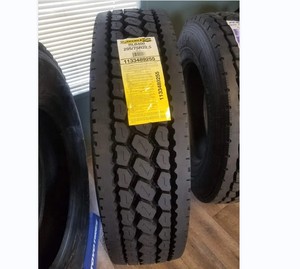





















































































































































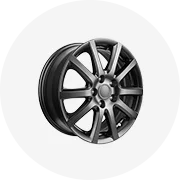
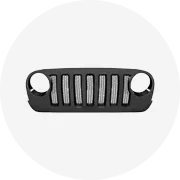
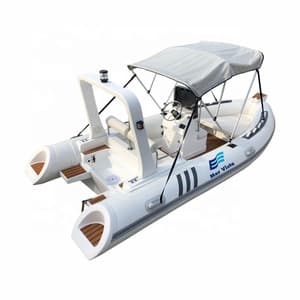
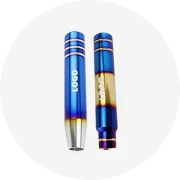
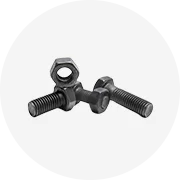

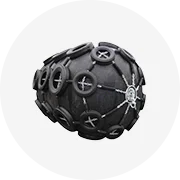
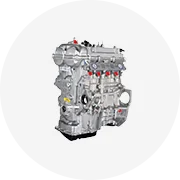
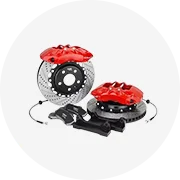
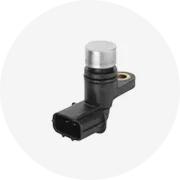

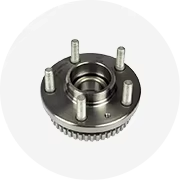

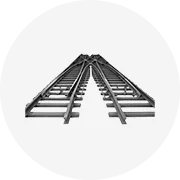
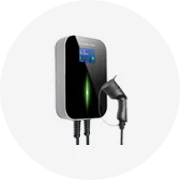
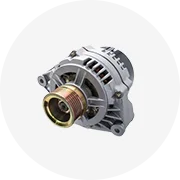






 浙公网安备 33010002000092号
浙公网安备 33010002000092号 浙B2-20120091-4
浙B2-20120091-4